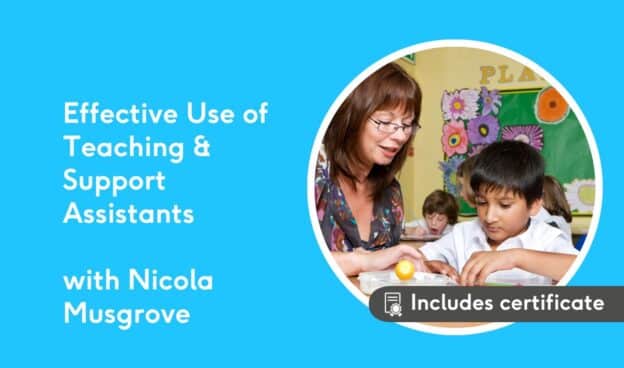There are many effective ways to use a teaching assistant, and it really depends on the needs of the classroom and the specific skills and abilities of the assistant. The advice below, supporting introductory video and lesson will help you understand what the research tells us about effective use of teaching assistants.
To get you started, here are a few tips that might be helpful:
- Communication is key. Make sure that the teaching assistant knows what is expected of them and what their responsibilities are. Create a clear plan for how they will be working with the students, and be sure to touch base with them regularly to make sure things are running smoothly.
- Use your teaching assistant to differentiate instruction. They can work with small groups of students who need extra help or provide one-on-one support for students who need it. They can also help create materials to support different learning styles and abilities.
- Have them assist with grading and administrative tasks. Teaching assistants can be a valuable resource for grading assignments, tracking attendance, and other administrative tasks. This can free up more time for you to focus on lesson planning and instruction.
- Use them to provide feedback and support. Teaching assistants can be a great resource for providing feedback to students. They can help students with their writing, provide feedback on assignments, and answer questions.
Overall, the key to effective use of a teaching assistant is to communicate clearly, use them to differentiate instruction and provide feedback.
Below are two videos from the Education Endowment Fund (EEF) which explains the research around preparing and deploying teaching assistants in the classroom. The EEF research related to this area are located in the materials section of this course.


